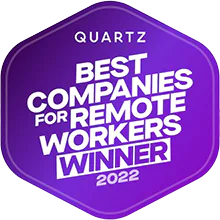Wonolo
According to the latest data from the Bureau of Labor Statistics, there were 10.4 million job openings at the end of September but only 7.7 million unemployed workers to fill them. At the same time, some 4.4 million workers (3% of the total workforce) quit their roles, the highest number since records began. It’s no wonder that employers are struggling to find the staff they so badly need. What’s the solution?
There’s no silver bullet but the first step to improving your chances when talent is in short supply is to offer the salary, benefits, and employee experience job seekers are looking for. At a time when candidates have the upper hand, employers need to meet and ideally exceed their demands. Changing where you look for staff can also pay dividends. Desperate times call for desperate measures and that means looking beyond traditional talent pools and exploring new avenues.
Close To Home
Sometimes the best candidates are closer than you think. So, before searching the market, consider if there are people within your organization who are ready for promotion and could take up some of your more senior, harder-to-fill roles. The benefit is that they know your business and your culture and can adapt much more readily than external hires. Also, developing the careers of your existing staff improves retention. This is validated by Tiger Recruitment research which found that a lack of career progression is the main reason why people left their last role.
Tapping into employees’ personal networks can also help you reach qualified candidates. So, if you don’t already have an employee referral scheme, now is the time to set one up.
Boomerang Employees
Former employees are another potential source of talent and referrals, and with platforms such as Enterprise Alumni, building a community of alumni and engaging with them in a meaningful way is easier than ever before.
These so-called boomerang employees are a growing trend, with experts predicting the “Great Return” as people who quit their jobs during the pandemic in search of new adventures decide to come back.
Hiring people who have worked for you before can be effective, in the short term at least. What could be better than welcoming back a familiar face who knows the business and how it operates?
However, a word of caution: employing someone who decided to leave your organization isn’t always plain sailing. People tend to leave jobs for very good reasons – and those don’t go away. There are, of course, exceptions; people’s priorities might have changed during the pandemic, and they might have realized that the grass isn’t greener and return with a fresh outlook. Organizations can change too and the pandemic means that many are much more flexible, which could also be an incentive for ex-employees to return.
Career Returners
In fact, offering genuinely flexible working infinitely increases your appeal to other candidate groups, including those who were forced to leave the workforce or scale back their hours during the pandemic due to childcare or other caring responsibilities.
When you consider that 2.3 million women dropped out of the labor force between February 2020 and February 2021, that’s a significant source of skills that your business could be reconnecting with. In order to attract these career-breakers, be prepared to provide the necessary support to ease them back into the workplace, along with flexible working arrangements that enable them to balance their work and family commitments. This might mean allowing people to work different shifts, compressed hours, or even asynchronous hours to fit their commitments.
Remote Workers
It’s also worth considering whether any of your job openings could be filled by remote workers. Pre-pandemic this might have seemed implausible but we’ve seen that, with the right technology and open communication, remote working can be successful, depending on the role. Think about how remote you’re willing to go. For example, is it important that the person is in the same time zone as their team, or could having people in different time zones enable you to better serve your global clients? It’s a question of what will suit your business, but the more open you are to recruits from other locations, the larger your talent pool becomes.
More Flexible Approach
Expanding your horizons and looking in different places can lead you to new sources of talent. However, your success may be limited if you fail to adapt your approach. If you do what you’ve always done, you’ll get what you always got. Start by reviewing the criteria you typically use to vet candidates. Do people really need X degree from X university and X years of experience in the same role? If you’re too prescriptive, you may end up excluding huge swathes of potential hires. One way to open up new talent pools is through skills-based recruitment; this involves mapping out the skills that are required for the role and writing a job advert that will appeal to people with those skills.
So, expand your search, look in new places, and be more flexible about your requirements. You may be pleasantly surprised. Ultimately, the braver you are, the more prepared you are to diversify and break free from your usual talent types, the greater your chance of finding the people you need and the richer your organization will be.
This article was written by David Morel from Forbes and was legally licensed through the Industry Dive publisher network. Please direct all licensing questions to legal@industrydive.com.






